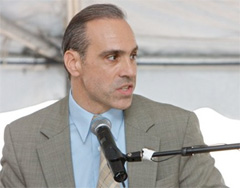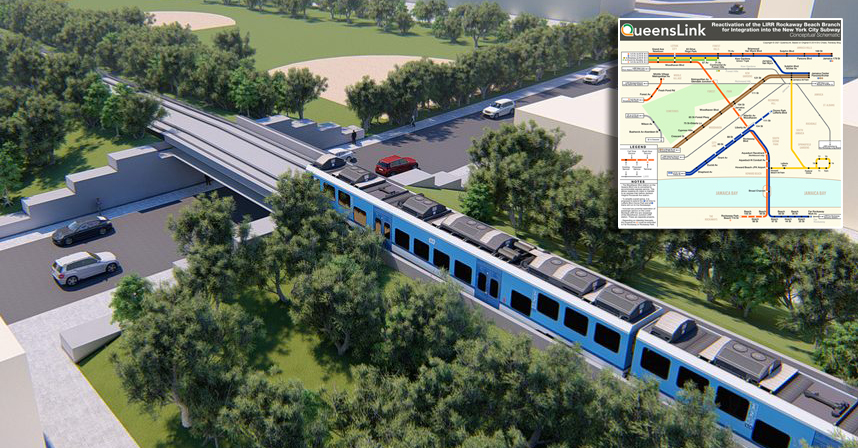
You know something's amiss when you hear Republicans calling for more red tape and government bureaucracy, as Staten Island Council Members James Oddo and Vincent Ignizio did earlier this week with their call to require environmental review for all new bike lanes. But let's indulge Oddo and Ignizio and take their proposal seriously for a moment. Does it have any merit?
We asked some top legal and planning experts for their opinion, and they agreed: Bike lanes generally don't and shouldn't need to go through environmental review.
Oddo's office didn't respond to Streetsblog's request to see the letter outlining his proposal, but it seems as though he would have to pass new legislation. It's fairly clear that under current law, striping a bike lane generally doesn't require environmental review. There's a presumption that small street changes like signage are exempt from environmental review, said Columbia Law School professor and environmental law expert Michael Gerrard.
Specifically, the law exempts the "installation of traffic control devices on existing streets, roads, and highways." Pavement markings are included in the federal Manual on Uniform Traffic Control Devices, suggesting that bike lanes fall under that exemption.
Even if bike lanes aren't categorically exempt, continued Gerrard, a given project may not be predicted to create a significant enough impact to require environmental review. That determination would be made, in this case, by the city DOT.
Bike lanes not only don't need to go through environmental review, they shouldn't, said former DOT First Deputy Commissioner Sam Schwartz, now the head of Sam Schwartz Engineering. “EIS laws and guidelines were established to protect the environment. If an action is not likely to meet the threshold set by regulation (and few if any bike lanes do), then why waste a ton of money?" Schwartz said. "Ironically, it would probably mean more work for my firm, but it's a waste of taxpayer money."
"No bike lane would fail an environmental review," said Michael King, a principal at the transportation planning firm NelsonNygaard.
There will always be a positive environmental impact, he explained, something that the city often has to demonstrate anyway to receive federal funding. Environmental review would add another layer of expense and red tape, setting a threshold that King has never had to meet for the bike projects he's worked on in a dozen cities around the country and the world.
So in case there was any doubt, Oddo's proposal has nothing to do with improving the environment, or even proper attention to environmental procedures. It's about throwing up road blocks to the continued expansion of the bike network (which, in his district, is already shrinking).
"That's how you stall things, you study them," said King.
Gerrard said that providing an environmental assessment would take around three months for each bike lane and that completing a full environmental impact statement could take 18 months or more. "I assume this is being proposed to throw up an obstacle to making bike lanes," he said.
While noting that there's a tension between the environmental benefits of more bike lanes and of a strong environmental review process, Gerrard concluded that "it would be unfortunate if the environmental laws were used excessively to impede environmentally beneficial actions."
There's also a strong case to be made that, regardless of how many supporters Oddo and Ignizio may find on the Council, they have no legal authority to force bike lanes through environmental review. The city's review process is regulated by state law, the city charter, executive order and administrative rules, not by Council legislation.
Bike lanes don't need environmental review as it stands. Forcing them to go through it would be a costly and unnecessary exercise in violation of the purpose of environmental review, the end result of which would be more dangerous streets.





